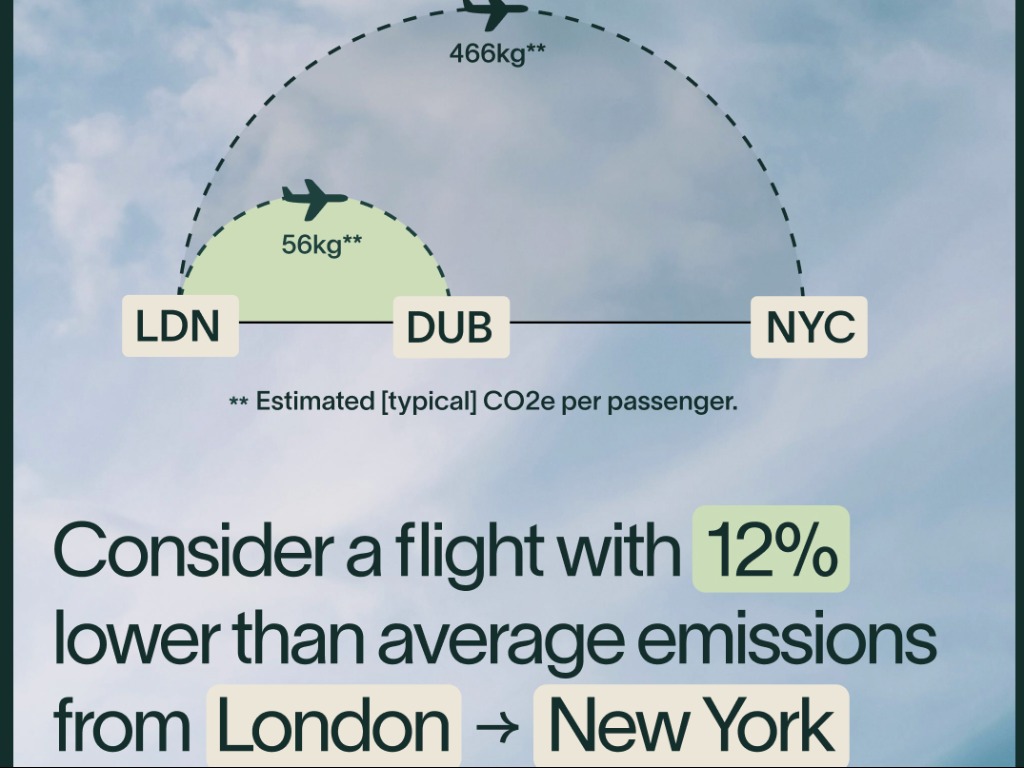Travalyst flight emissions data shown in more than 65 billion searches

Travalyst has scaled flight emissions information globally, with emissions data appearing in over 65 billion searches.
The search figure, released by Travalyst – the not-for-profit organisation founded by Prince Harry, The Duke of Sussex – aggregates data from a number of its coalition partners, which include Amadeus, Booking.com, Expedia Group, Google, Sabre, Skyscanner, Travelport, and Trip.com Group.
The mission of Travalyst is to align the travel industry behind clear, consistent and credible sustainability information to help people make more informed choices. The Travel Impact Model (TIM), which estimates lifecycle emissions for flights at the individual passenger level, was developed by Google and has been scaled through the Travalyst coalition.
Platforms using the TIM present flight emissions information at the time of booking, so travellers are able to choose a flight with an estimated lower-than-typical CO2e footprint3. On some platforms, travellers can also sort flight search results by emissions, alongside standard filter options such as cost and arrival/departure time.

For example, the typical CO2e per passenger on a one-way economy flight from London (LGW) to New York (JFK) is 466 kg4. Popular travel booking platforms highlight an option that is 12% (57 kg) lower than the typical CO2e for that route. The difference in CO2e is approximately equivalent to a passenger’s flight from London (LGW) to Dublin (DUB) (typically 56 kg CO2e).
The TIM takes a variety of attributes into account including flight origin and destination, aircraft type, cabin class and seat configuration, load factors and average aircraft utilisation. With such granular data comes the ability to see emissions at individual airline level, which could pave the way for airlines to compete on reducing their climate impact, as well as price and service.
Key takeaways include:
- Flight emissions information has been shown to travellers in over 65 billion searches globally.
- A single model used to calculate emissions estimates for flights has been integrated into major travel booking platforms around the world thanks to the Travalyst coalition.
- Travellers want to travel more sustainably and now they have access to clear, consistent and credible information at the point of planning and booking.
- Scaling access to flight emissions data, at the individual airline level, could pave the way for airlines to compete on reducing their carbon footprint.
Sally Davey, CEO of Travalyst, observed: “Travellers hold enormous influence in their collective purchasing decisions. Flight emissions estimates have been scaled across our coalition partners’ booking platforms, resulting in this information appearing in over 65 billion flight searches globally. By supporting travellers to book lower-emitting flights, in the long-term we hope this will drive demand for more sustainable supply, encourage innovation, support corporations with their reduction targets, and help to guide policy.”
Sebnem Erzan, Global Head of Travel Sustainability Partnerships at Google, pointed out: “We want to help people better understand the environmental impact of their travel choices – no matter where they search for their next flight. Through our efforts with Travalyst and the Travel Impact Model, information on flight emissions is now more accessible and actionable for people around the world.”
Flying continues to be a major source of carbon emissions and is inherently unsustainable, regardless of travellers selecting lower-emitting flights. Alternative long-distance transportation methods, like rail, have a significantly smaller environmental impact but there are instances where flying is the only viable choice. Giving travellers access to clear, credible and consistent information about flight emissions enables them to make more informed decisions.
Go to www.travalyst.org for more.


